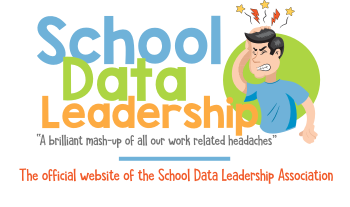Standard 5 - Assessing Students for Learning
Teachers apply knowledge of the purposes, characteristics, and uses of different types of assessments. They collect and analyze assessment data from a variety of sources and use those data to inform instruction. They review data, both individually and with colleagues, to monitor student learning. Teachers use assessment data to establish learning goals and to plan, differentiate, and modify instruction. They involve all students in self-assessment, goal setting and monitoring progress. Teachers use available technologies to assist in assessment, analysis, and communication of student learning. They use assessment information to share timely and comprehensible feedback with students and their families.
5.2 - Collecting and analyzing assessment data from a variety of sources to inform instruction
As teachers develop, they may ask, “How do I…” or “Why do I…”
- keep a continuous and comprehensive record of group and individual achievement?
- select, design, and use assessment tools appropriate to what is being assessed?
- collect, select, and reflect upon evidence of student learning?
- work with families to gather information about all students and their learning?
- use standardized tests, diagnostic tools, and developmental assessments to understand student progress?
- use a range of assessment strategies to implement and monitor individualized student learning goals (including IEP goals)?
- assess student behavior to support learning?
- interpret data based on how an assessment is scored and what results it reports?
Examples and Resources
Keeping Continuous and Comprehensive Records of Group and Individual Achievement
Maintaining accurate and ongoing records of student progress helps teachers identify trends, recognize areas needing improvement, and celebrate successes. These records include formative and summative assessments, attendance, participation, and other relevant metrics.
• Example: A teacher uses a digital grade book like PowerSchool to track and analyze student performance over the semester.
• Resource: PowerSchool
Selecting, Designing, and Using Assessment Tools Appropriate to What is Being Assessed
Selecting the right tools and designing appropriate assessments is crucial for accurately measuring student learning. Tools may include quizzes, projects, peer reviews, and self-assessments.
• Example: For a history unit, a teacher uses a mix of primary source analysis, written essays, and multiple-choice quizzes to assess different skills.
• Resource: Edutopia on Assessment Tools
Collecting, Selecting, and Reflecting Upon Evidence of Student Learning
Teachers gather various evidence such as written assignments, project work, tests, and observations. Reflecting on this evidence helps inform future instruction.
• Example: A teacher reviews student essays to assess understanding of a literature unit, looking for common errors to address in future lessons.
• Resource: Reflective Practice in Teaching
Working with Families to Gather Information About Students and Their Learning
Engaging with families provides a fuller picture of a student’s learning environment and challenges. This includes regular communication through meetings, reports, and digital tools.
• Example: A teacher holds parent-teacher conferences to discuss student progress and gather input on student needs and strengths.
• Resource: Family Engagement Toolkit
Using Standardized Tests, Diagnostic Tools, and Developmental Assessments to Understand Student Progress
Standardized tests and diagnostic tools offer objective measures of student performance and areas for growth.
• Example: A teacher uses state-mandated standardized test results to identify students who need additional support in reading and math.
• Resource: Understanding Standardized Testing
Using a Range of Assessment Strategies to Implement and Monitor Individualized Student Learning Goals (Including IEP Goals)
Employing diverse assessment strategies ensures that all students, including those with Individualized Education Programs (IEPs), have their learning accurately assessed and supported.
• Example: A special education teacher uses observational assessments, performance tasks, and adaptive technology to track and support IEP goals.
Assessing Student Behavior to Support Learning
Behavioral assessments help teachers understand and address behaviors that impact learning, ensuring a conducive learning environment.
• Example: A teacher uses a behavior checklist and anecdotal records to monitor and support positive student behavior in the classroom.
• Resource: Behavior Assessment and Intervention
Interpreting Data Based on How an Assessment is Scored and What Results It Reports
Understanding the scoring methods and interpreting the results of various assessments helps teachers make informed decisions about instruction and student support.
• Example: A teacher analyzes the results of a formative assessment to identify misconceptions and plan targeted reteaching sessions.
• Resource: Data-Driven Decision Making
Web Resources for Teachers
1. Edutopia - Assessment: Comprehensive articles and resources on various assessment strategies.
2. Carnegie Mellon University - Eberly Center: Detailed guides on aligning assessments with learning objectives and understanding assessment basics.
3. The Glossary of Education Reform: Definitions and explanations of key assessment terms and practices.
• Glossary of Education Reform
